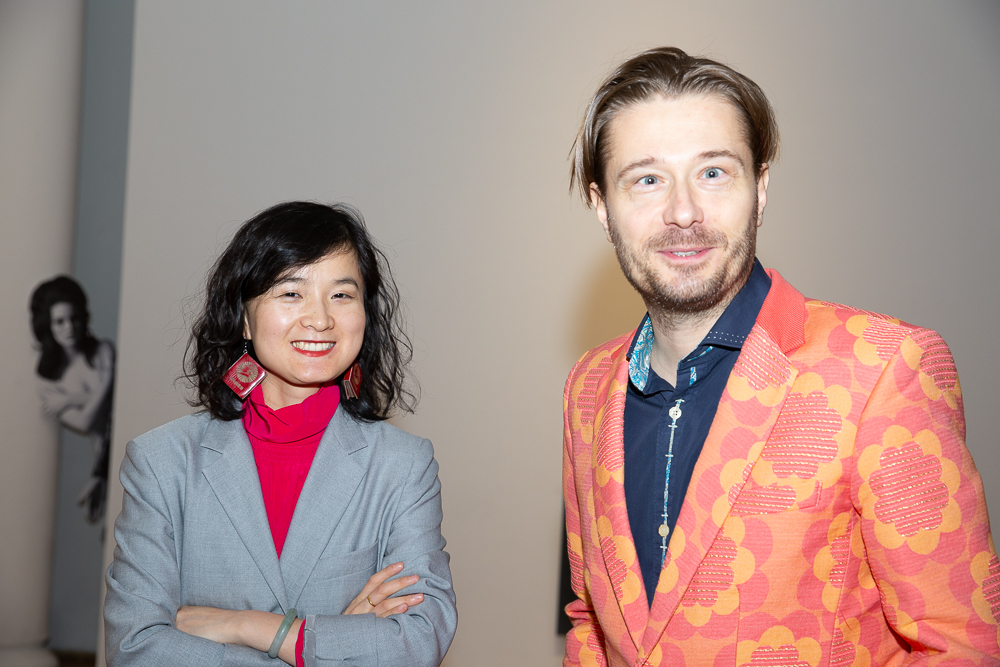The symbiotic duo of Kuzma Vostrikov and Ajuan Song presents I’m Not Afraid to Die, a photography exhibition exploring existential pop identity, curated by Milk + Night. Featuring a selection of 20 photographs, I’m Not Afraid to Die delves into Warholian theory about identity, as well as society’s fixation with nostalgia, excess, and self-portraiture. The photo series is inspired by a novel Kuzma wrote: “Just to Land in Tokyo”.
The show is currently on view at Tenri Cultural Institute. Though the gallery is temporarily closed due to growing concerns of the COVID-19 virus, the exhibition will re-open to the public when it is deemed safe to do so.
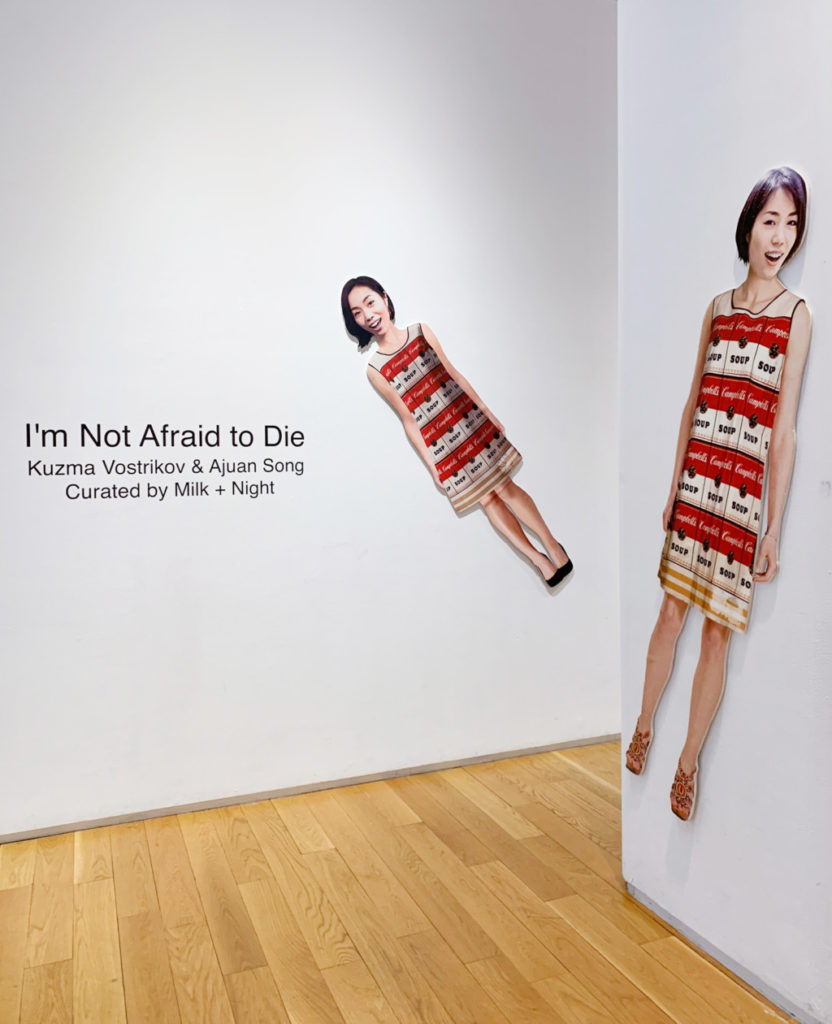
This photo series is inspired by a novel Kuzma wrote. Can you tell us a little bit about that and walk us through the narrative?
As I tell you about this story, we’re in the middle of a virus-induced panic. We’re all terrified, aren’t we? We’re buying toilet paper in all the stores? Let’s talk more about that below. Don’t avert your eyes. Have you ever had the feeling that you can see everything, but everyone else is blind? The feeling that you are completely healthy and right, but you can tell the whole world has gone crazy? If you’ve ever had that feeling, then given that you’re an intelligent person, what doctor would you want to consult?
In this novel, that is what happens to the protagonist – it takes the measurements of the observed. An attempt to pose this question in the format of poetic suspense: what is the state of the observer who gets mixed up in these subjective circumstances? How close can he get to other people? How much can he accept the broken, fragmented picture of the world that social and cultural circumstances provide to him?
The book is about a man who has written his philosophy with his feet as an immigrant and nomad. But his feet turned out to be too thick-skinned to craft any fine patterns. The protagonist cracks before he ever makes it out of his walnut into open space. But I’ll stop boring you. “Just to Land in Tokyo” is a suspense novel about a thirty-eight-year-old photographer named Hans, whose mother died when he was young while their family was fleeing East Germany. Hans’ mother drowned in the river that marked the border between West and East Berlin. The Berlin Wall fell soon after, making their escape twice as meaningless. Twenty years living far from his homeland have not helped Hans get over the tragedy.
After living in New York for a while, Hans goes out of his mind after seeing a jazz performance in the Blue Note club in New York. Having met Yuma, the singer from Tokyo, only once, he decides to search for the key to her heart. But the day following their date the girl disappears without a trace. He looks for her every way he can think of: on the internet, asking neighbors, making calls, and writing letters.
For an illegal exhibition of photographs of the inexplicably absent Yuma, a court decides that Hans should pay her half a million dollars. Hans finds out her address – the apartment downstairs. He drills a hole in the concrete floor to get to her.
The court decision and his debt are not the main reason Hans tries to hang himself in Central Park. He feels guilt about his parents and regrets the escape from East Germany that destroyed his family.
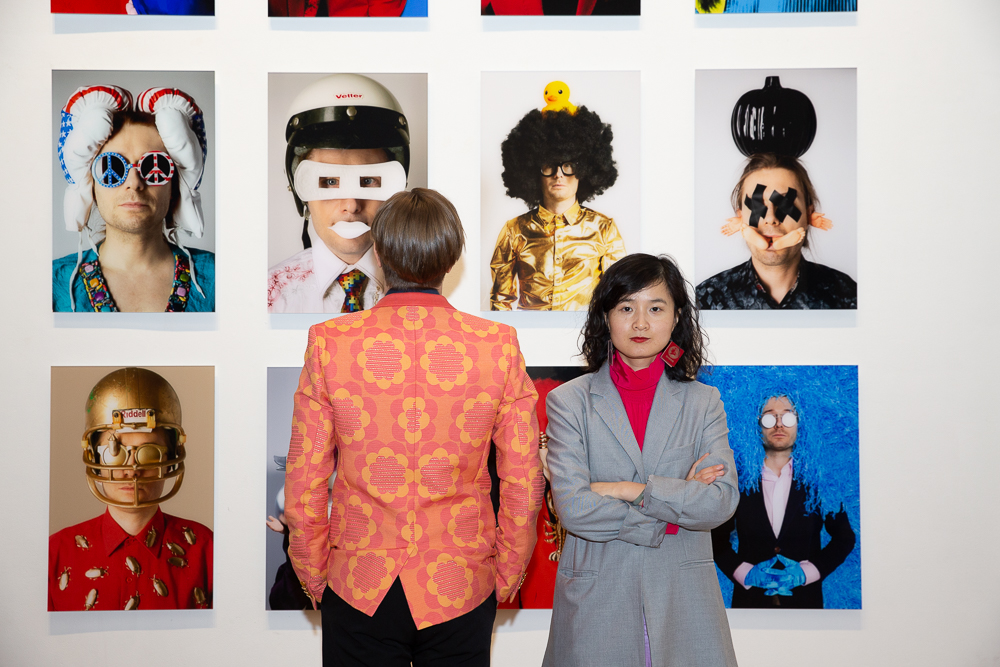
What is the meaning behind the exhibition title “I Am Not Afraid to Die”?
Why did we all rush out to buy up the toilet paper? We all want to believe in some idea that will save us. Robinson Crusoe built his wooden boat in the middle of the island. In Japan, people are afraid of sunburns. If the Sun hits your skin, your life is over. You’re no longer the person you were before. What is Manhattan afraid of? Two winters ago, half an inch of snow fell in New York. People hid away at home, roads were closed, groceries disappeared from the stores. Do you remember that collapse, that genuine catastrophe for mankind? Somebody is still sitting locked away in his cozy apartment on Madison.
We rush down some tunnel from fear toward salvation, rebound, think up some new fear, and search for solutions. We need to self-identify and set priorities. We don’t believe in God or Wall Street or the family or Tinder.
“I Am Not Afraid to Die” is a reflection on social processes in society. It is a metaphorical imitation of individual feelings triggered by modern problems. It is also the feelings of an immigrant, something that gets talked about a lot. To be an immigrant to the United States today you need to go through a ritual of losing your virginity. I’ll explain. The process of getting residency is a process of bankruptcy for your family, suppressing your individuality, ignoring your professional experience and cultural code. Soon torture and rape will be mandatory steps in applying for citizenship. But what would you expect in trying to make it into such a good country?
Not long ago bats drank the red blood of human beings and infected them with the coronavirus. A government functionary who has sent a hundred or more applications into the trashcan in one afternoon enjoys some cheap red wine with his wife at sunset. But none of this is fun or exciting for anyone.
Life knows no limits to its forms and variations – that’s what artists and poets are used to enjoying! “I Am Not Afraid to Die” means that nothing encourages the development of the spirit like a chopped-off arm or leg! The main character in the book, like the main character in the exhibition (supported by Ajuan’s camera!), found an elaborate solution to his problem of “fate.”
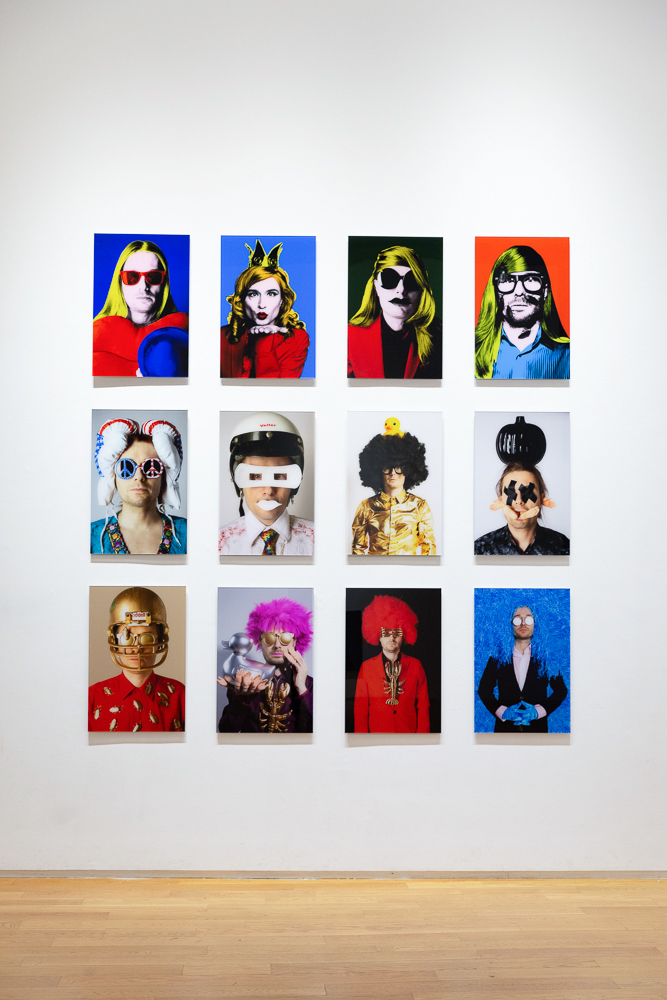
Kuzma serves as the primary subject for this series, and many of the photographs could be considered self-portraits. By directly referencing the Warholian concept of the “surface self”, as well as modern society’s fixation with self-portraiture via selfie, what ideas do you aim to communicate about self-awareness and self-actualization?
The protagonist recorded his Instagram performance out on the grass, in the open air. Everyone wants to improve their life depending on the level of courage to the declaration. Andy Warhol died of boredom while trying to find his identity. Maybe, in order to avoid digging too deep into yourself, you need to put your shovel to work on some issues of public concern. Andy anticipated Instagram by hiring his “superstars” to burnish his own fame! Miles of film, canvas, paper and other materials were used up just to anticipate and give rise to the digital era. Pop art and the Factory are in fact the early embryo of Instagram. It’s a place where everyone is equal, identically talented, and capable of producing tons of genius art!
You think the Renaissance means Michelangelo or Botticelli? The real Renaissance is the modern garbage of Instagram, whose halo lights up all the doubters before they’ve even joined the ranks of the neophytes! Hans adores modern technology, so he joined that popular movement with great enthusiasm. He has one Instagram follower: himself.
Selfies are a consolation. Visual accessories and computer graphics for augmented reality are fillings for our lack of success, like a filling in a rotten tooth. What pleasure we all take in working with different materials, fattening our lips with silicon, drawing bunny ears or paws or pigtails on our heads, cleaning up our dirty skin. One click of the mouse and our wrinkles are gone. And our main character in all this is a master, number one worldwide!
The only one worse than Bernie Madoff was Andy Warhol, who promised everyone 15 minutes of fame. Television is dead, leaving behind it only lamenting leaning towers of relay stations. In the desert of cynicism, there is no fame and no king.
Today, wresting away even a second of attention is a resounding victory for your client! Whole marketing departments, staffed by a hundred people, wrack their brains around the clock about what to say to Elon Musk, Kim Kardashian, or Bill Gates on Twitter. But nobody feels like listening anymore.
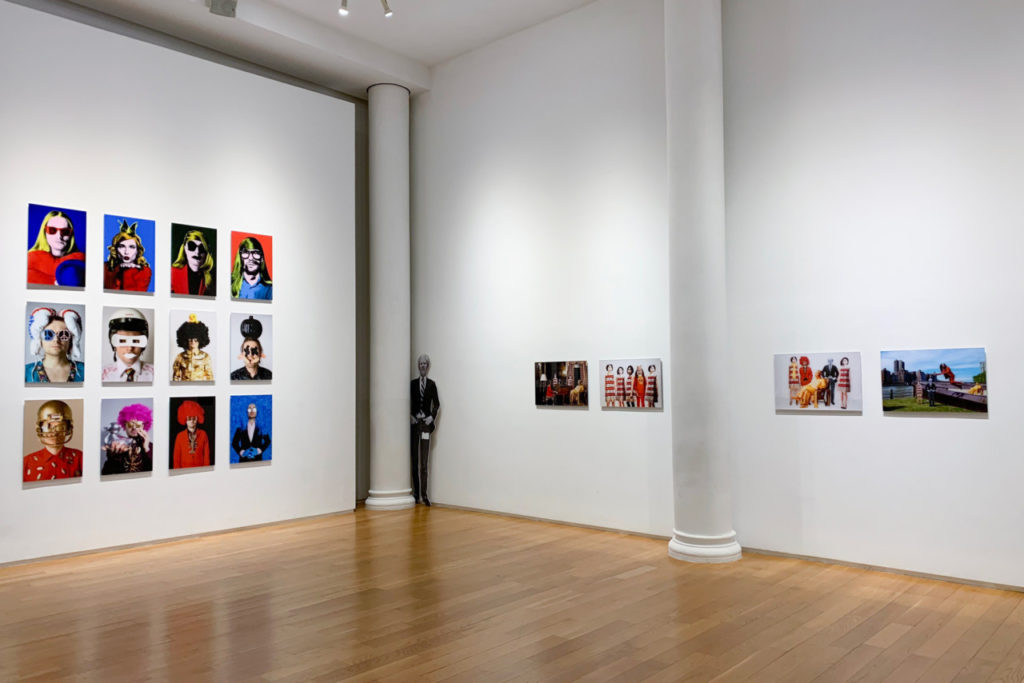
Your use of symbolism immediately lets the viewer know all is not what it seems. Through a wide variety of whimsical objects and fashion accessories, Kuzma’s eyes, ears, and hands are obscured from viewers, implying his sensory abilities are compromised and something is being hidden. What was your thinking behind this very deliberate choice?
That man in the mask in the photographs was hiding from the virus. These aren’t expensive, fashionable accessories you can hide behind, like Tiffany or Dolce & Gabbana, they’re consumer goods like toilet paper and q-tips. There is another level of consumer goods, too: an apartment, a car, a house in the country. That includes yachts and airplanes and islands. Then there are tanks, an army and navy. And so on and so on. A ballerina dancing Tchaikovsky isn’t what she puts herself out as being, either. Her father drinks and her boyfriend begs for money to spend on marijuana. But a swan must remain a swan. The project’s unprepossessing task is to strengthen the idea of the estrangement of a person who ponders his environment. In trying to penetrate into that environment, in taking off his helmet, the traveler is afraid of suffocating in an unfamiliar atmosphere. The irony here is just like the Hollywood device where a superhero smokes a cigarette on the wing of an airplane or holds a whole railroad train in his teeth. We know that those skills exist only on the screen. In this sense, the protagonist of the photographs is a mirage, overgrown with symbols of doubt, like a dead seashell that has lain on the ocean floor for a couple hundred years. The character uses modern symbols that directly symbolize current issues: information garbage, whatever is surrogate or vicarious, undefinability and uncertainty. Fear makes us put on our masks and declare the opposite of our own internal state. If you insert the little word “NOT” into many hackneyed declarations and judgments, you will see the world from a new, paradoxical, depth. Where it seems that we really can take off our helmets and fill our lungs with air, and there is no such thing as microbes.
Both the primary subject of this photo series and protagonist in your novel struggle with cultural displacement. How does this speak to the current immigration crisis and sociopolitical conflicts affecting the US and the world today?
An artist cannot compete with politicians, like horses with tanks or nightingales with rappers or bacteria with antibiotics. Horses are supposed to keep the grass trimmed in the fields and improve the world. You answered your question correctly before you even finished asking it. The protagonist and person in the photos have only one trait in common: cultural displacement. There, it feels good to have found that answer! The western model of society tells us to love people and be a social butterfly. Jump from branch to branch. The western model doesn’t intrude one bit on the soul. Leo Tolstoy felt it when the celebration ends before it begins. He writes about that in his diaries.
In our artistic heritage, political contexts are alien to us. But certainly, the protagonist suffers due to certain barriers. Crossing a national border is complicated business, and not only the border between East and West Germany thirty years ago. Officially crossing a border is still onerously hard work today. Conspiracy theorists say that this current virus is a good excuse for shutting the gates. We’re not talking about the Berlin Wall here or the Mexican one. And not about the Trump administration. Of course, there is always a physical barrier, and someone, let’s say a chief administrator, at the controls. But we’re talking more about a cultural or philosophical barrier. After all, a physical barrier could mean obtaining a visa or a work permit. Boarding an airplane and delivering your body to a country is the first step in the problem. A bureaucrat always knows a little better how an artist should create and who deserves a real life.
But immigration, unfortunately, is not jumping over a wall, whether German or Mexican or Chinese. It’s not a physical act. It’s actually almost impossible to begin a new life “on the inside.” Look at any second generation of immigrants’ kids in America, who sets themselves up and how. Talk with the people who have come here illegally but now have a passport. No joke, the American government sometimes knows how to forgive. Still, you may have a passport, but where’s that American dream? Why is there only
misery? The economy and the presidential administration probably aren’t to blame. Cultural and social borders are generally a much more complicated thing than a mere matter of administering the state. Accommodation doesn’t exist even a generation later. We can see that. Children who have parents in the immigrant environment usually experience an enormous distance. There is no contact, the kids are disillusioned with the adults, the parents are upset and powerless.
Our character poses the question of cultural accommodation, of the feeling of a person’s own worth, of the attempt to build bridges and consider each other’s cultural codes. In the book, the protagonist can’t find a solution. That is also the source of the exhibition’s name. It seems solutions don’t exist, either: when you weigh immigration, there will always be personal tragedy in the balance.
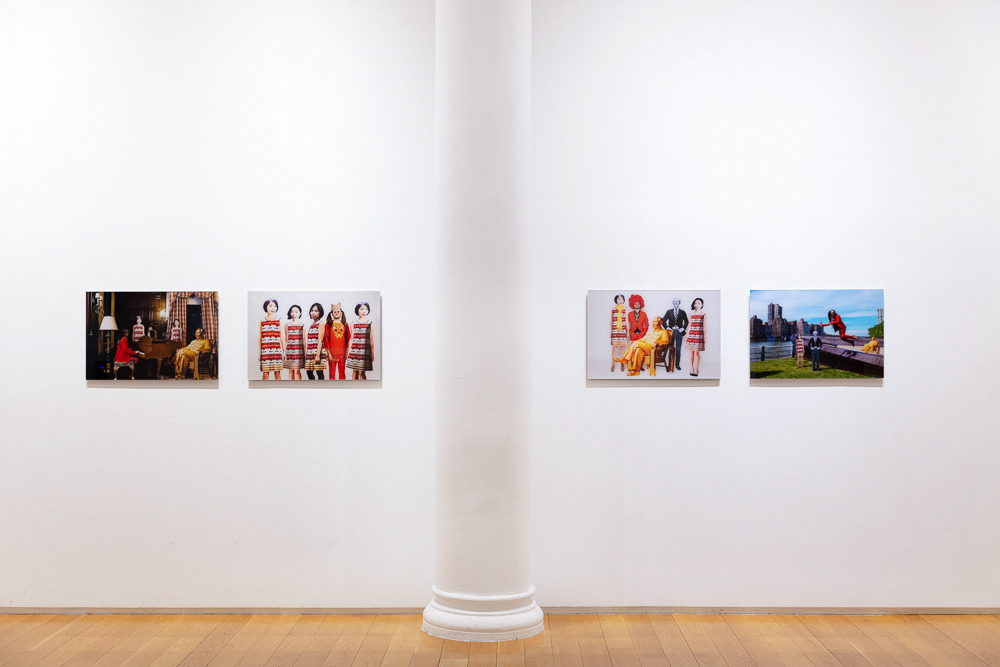
In addition to this exhibition, you and Ajuan are preparing to publish your first photography book on another one of your collaborative projects, “Absolutely Augmented Reality”. Can you tell us more about this project?
“Absolutely Augmented Reality” is a project addressing a completely different set of questions, more metaphysical, we’d say. It contains no psychological focus and doesn’t attempt to work things out with society. In a certain sense, it is kind of a scientific project. A dive into philosophical questions, using a visual language. This is just one iteration, a first step. But we think we have succeeded. We’re deeply involved in the publishing process for the photography book right now. It will be coming out from the Switzerland publisher Scheidegger & Spiess and be released in Europe and in September in New York.
The project consists of 100 medium-format analog photographs. It took about three years to put it together. During the shooting, we found a 5,000-square-foot warehouse in Bushwick. The project is a performance in and of itself, and aside from the photographs, it includes documentary materials and a film we are working on now. Another part of the project is a series of 100 drawings we made as preparation for the shoot.
Anything else you’d like to add?
Thank you for making this conversation possible. This time, when we’re all locked up inside, is the perfect time to re-examine priorities. Maybe it would be worth reading a hundred books this month. Or photographing one room, in a modern interpretation of Ulysses? Or Roman Polansky’s film “Carnage”? Do you feel that time is somehow fleeing, that you’re missing something? Everyone feels that way. That’s how unused we are to working alone. But maybe the vanished noise of the city is good, and it’s time to do some kind of interesting work? Ajuan bought up all the macaroni in Brooklyn. She locked herself in her studio and won’t open the door to anyone and spends the nights, drawing something.

Quiet Lunch is a grassroot online publication that seeks to promote various aspects of life and culture with a loving, but brute, educational tinge. When we say, “Creative Sustenance Daily,” we mean it.

